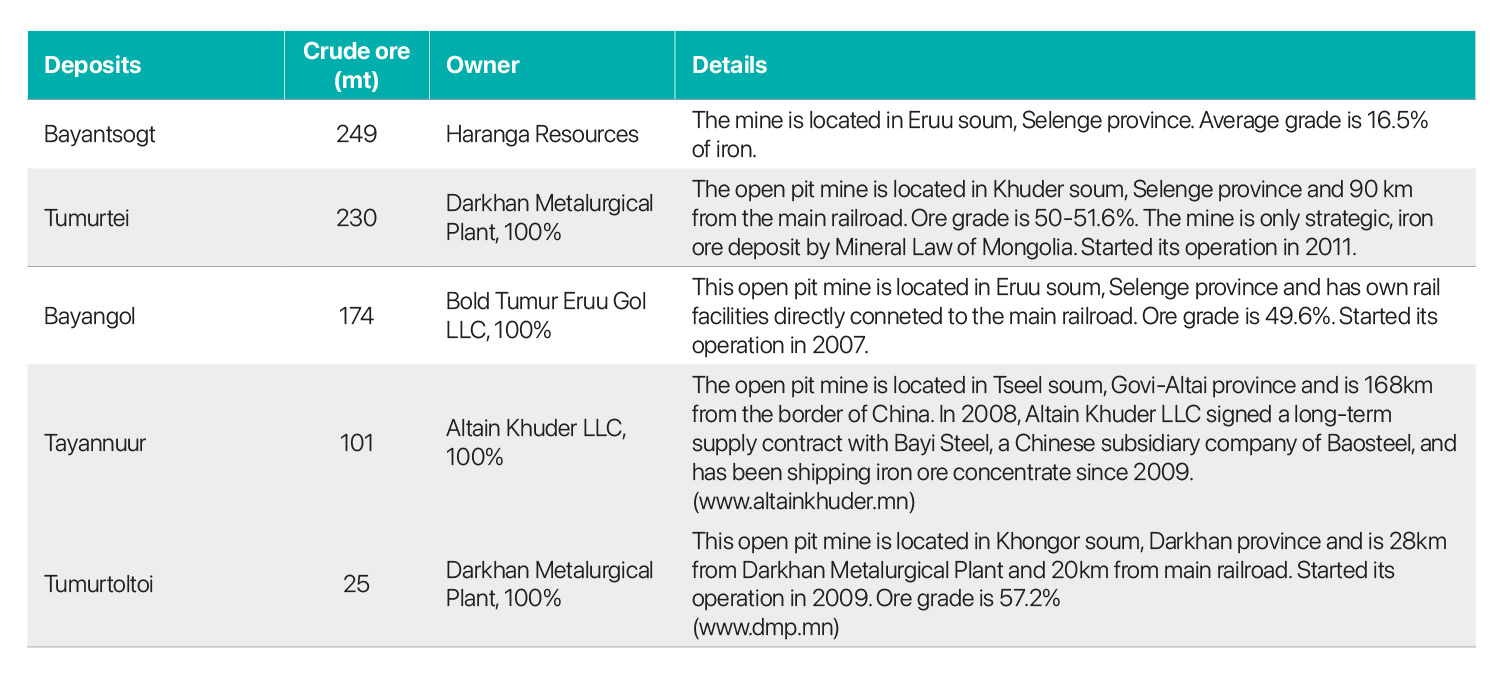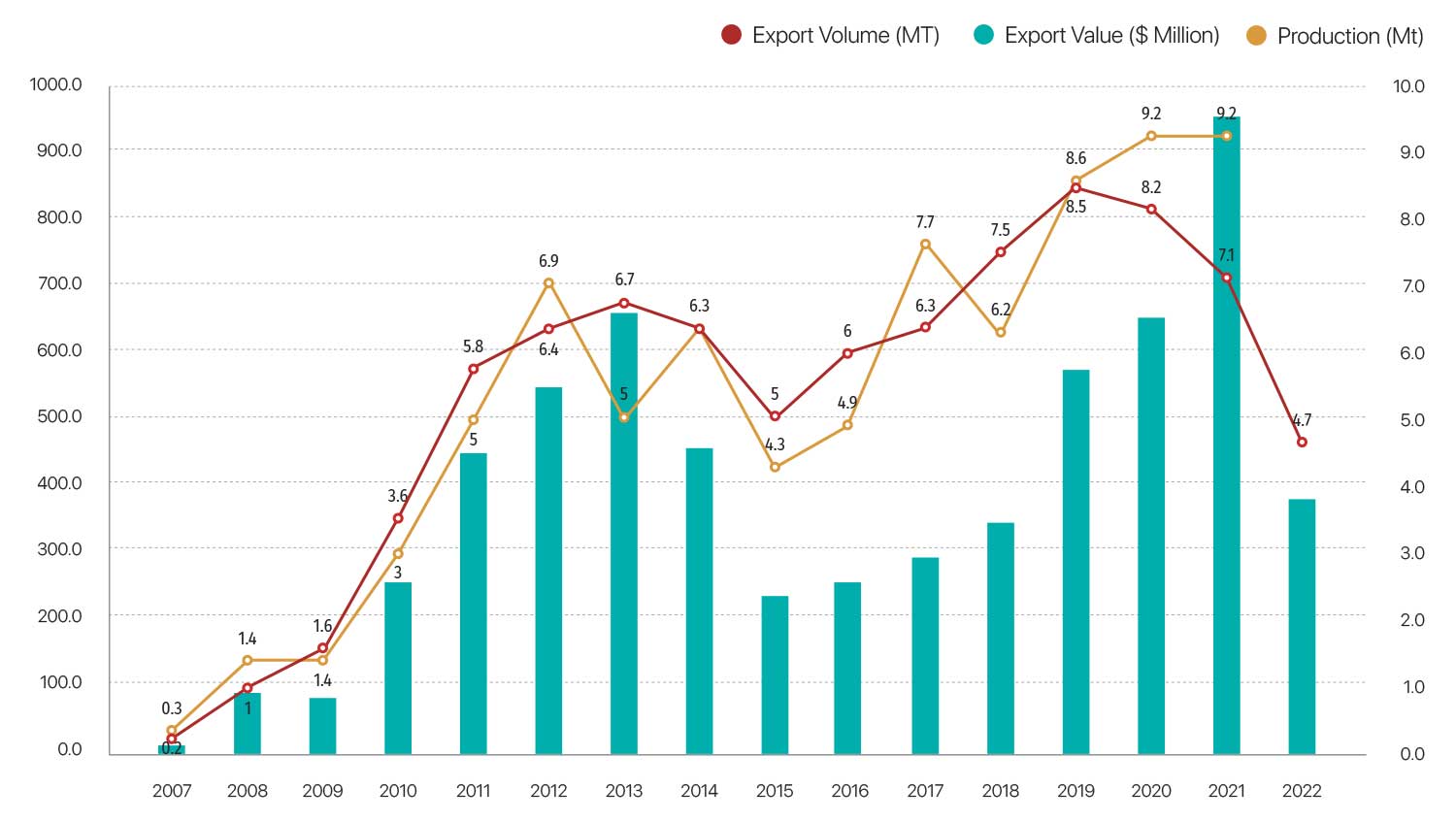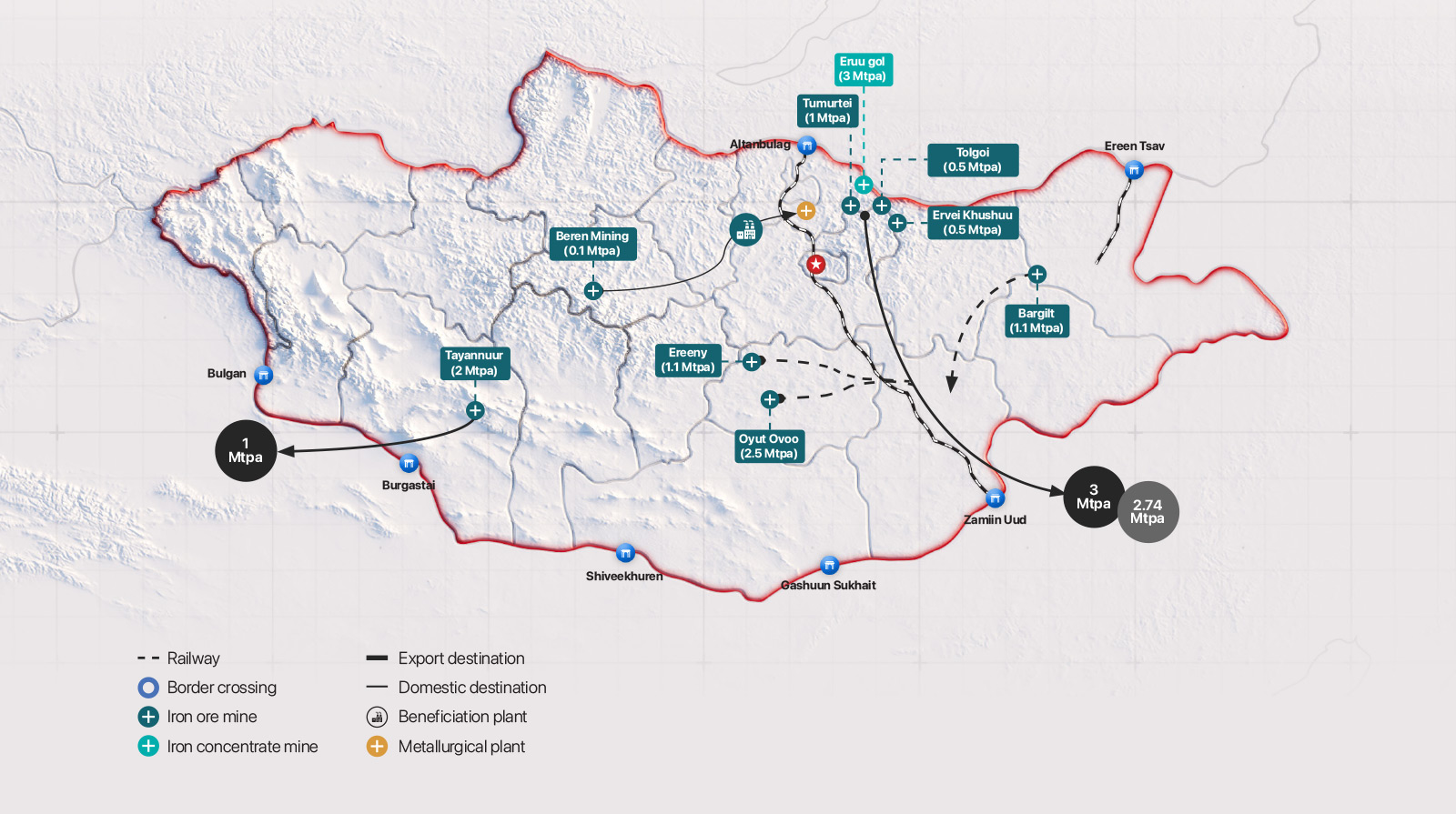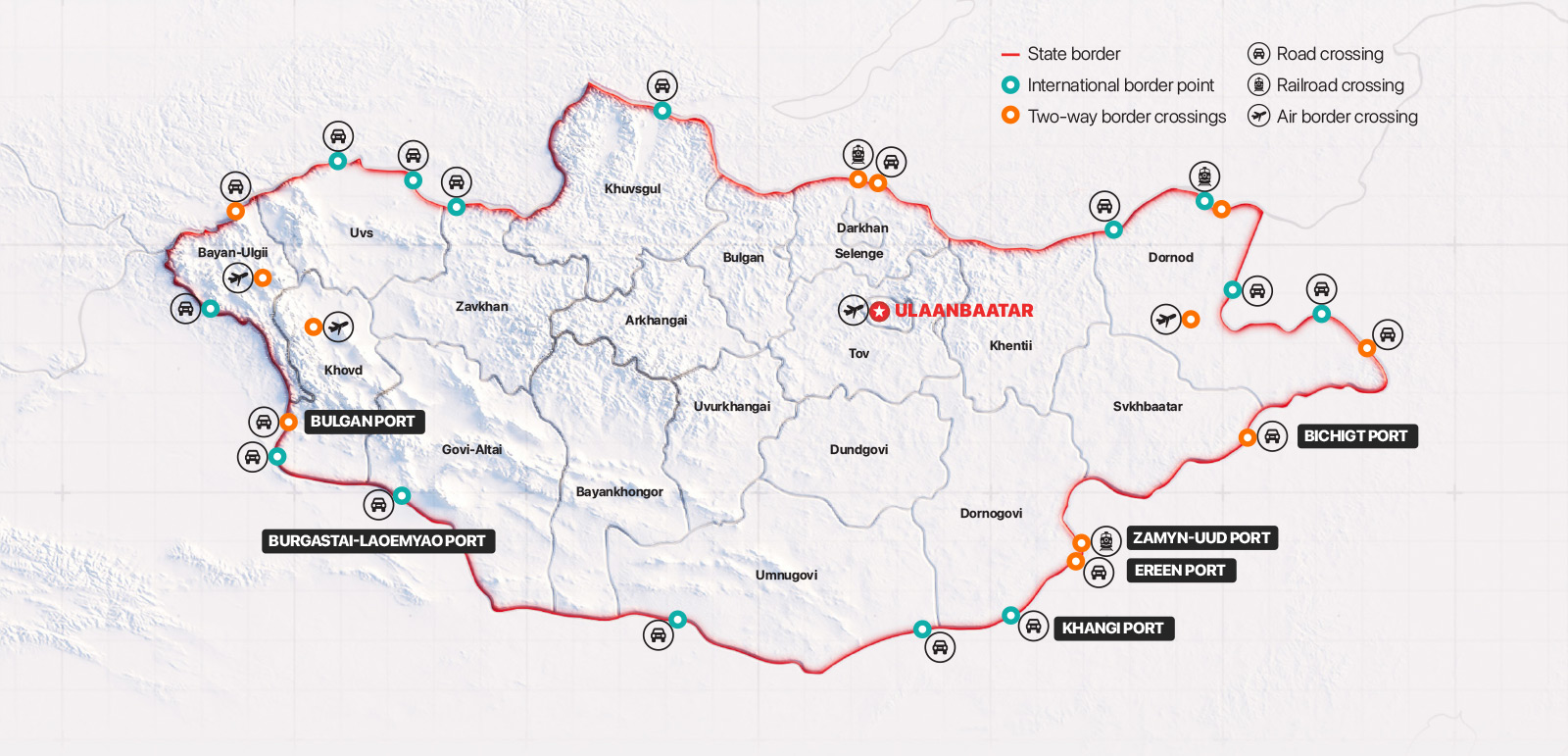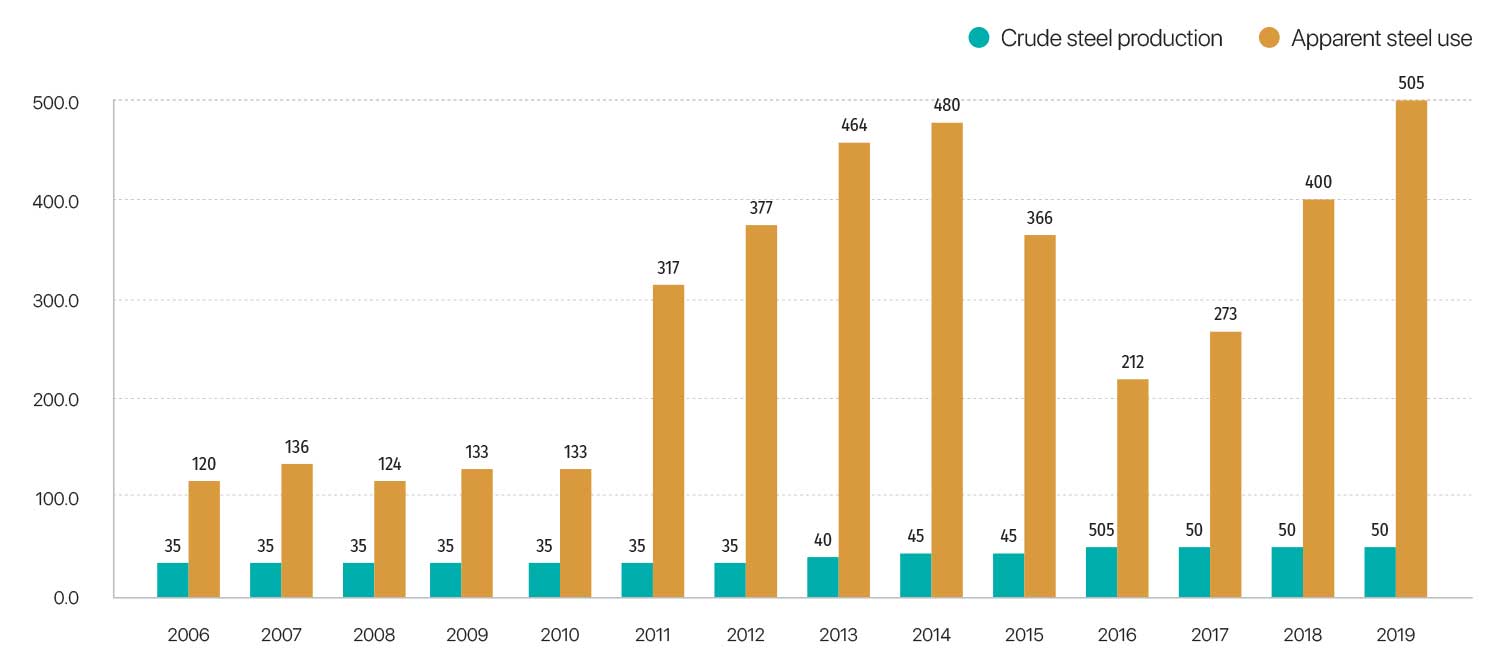Highlights
The central region of Mongolia has vast resources of iron ore. Iron ore exports have been steadily increasing since 2008 and have surged significantly since 2012. Prior to the Covid-19 pandemic in 2019, Mongolia’s total exports of iron ore reached 8.5 million tonnes.
Reserves & Exploration
Total geological reserves of crude ore are around 1.7 bn tonnes (source: MRPAM, 2016). In total, 63 deposits are registered, with 6 deposits having more than 50 m tonnes of ore. Mining of iron ore commenced in 2005. The majority of discovered reserves of iron ore in Mongolia is located near the Selenge and Darkhan provinces, considered as the industrial center of Mongolia.
Mongolia’s iron ore products are mainly low grade. Since 2011, an average of six million tonnes of iron ore is exported to China annually. Tumurtei, Tsakhiurt-Ovoo, Tayannuur, and Ereen were included in the category of deposits with over 50 m tonnes of iron ore reserves. At the end of 2022, there are 80 valid iron ore mining licenses.
Mongolian major iron ore reserves, Mt
Source: Economic Research Institute, Mongolian Mining Journal (2014)
Production & Export
Mining activities and exports of iron ore picked up in 2008 and have been consistent ever since. In 2020, iron ore export accounted for 9% of total minerals export.
In 2022, iron ore export accounted for 3.1% of total export. In terms of annual production, a total of 4.7m tonnes of iron ore and concentrates were exported in 2022, which is about 34% lower than the previous year.
Iron ore production and exports, 2007-2022
Source: The National Statistical Office of Mongolia
Infrastructure
Mongolian iron ore is shipped mainly by rail due to the fact that local road transportation tariffs are higher than railroad tariffs. However, most of the iron ore deposits are small and far from the main railroad. So, building railroads for all of these deposits is not financially viable (MRAM, 2016).
The major iron ore reserves in Northern Mongolia are connected to the main railroad and iron concentrates are shipped to Chinese steel mills directly via rail. However, Ulaanbaatar Railway holds a monopoly in Mongolia and charges relatively high tariffs on iron shipments. In order to mitigate these costs, there have been several instances where mining companies constructed self-financed railroads.
As a case in point, Bold Tumur Eruu Gol, the largest iron ore mining company, has built an 85km stretch of railway line between its mine in the Eruu district of Selenge province to Ulaanbaatar Railways (ADB, 2014). In total, the distance between the mine and the Chinese border is 1,100 km and it leads to a cost of $17 per tonne only for domestic transportation (Source: Economic Research Institute). Currently, most iron ore mines export to Baotou which is one of the major steel-producing regions of China through the Sainshand – Zamiinuud – Erlian – Baotou route.
The Government of Mongolia completed the development of the 227km long railroad project of Zuunbayan-Khangi route in 2022. It will be one of the key routes for iron ore and coal exports and 318km shorter than current iron ore export route. It is also estimated to cut transportation cost by $4-8 per tonne. The reduced cost is expected to create competitive prices for Mongolian iron ore against Chinese and Australian producers.
Main iron projects, their geographical distribution and projected capacity in 2013
Iron ore export ports
Source: General Authority for Border Protection of Mongolia
Market
External market:
Chinese demand is the main factor of a doubling of global steel production in the last decade, the primary driver of iron ore demand. China imported a record 1.17 billion tonnes of iron ore in 2020, up 9.5% on the year. Although Mongolia’s iron ore reserves are not as significant compared to major exporters, its geographical proximity to the biggest consumer China is a considerable advantage.
